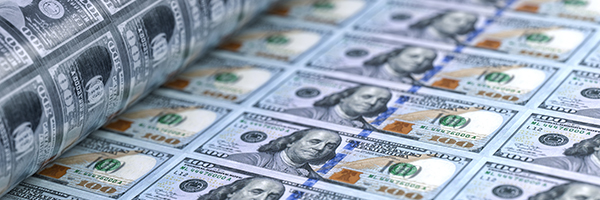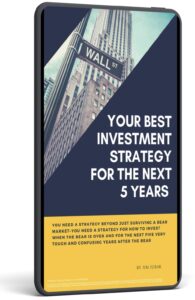
February 15, 2022 | Daily JAM |
Yesterday I owned the wrong stocks. Ford Motor (F) fell another 0.51%. Lithium producer Albemarle (ALB) dropped 1.39%. Deere (DE) gave up 1.38%. Today I owned the right stocks. Ford was up 3.55%. Albemarle gained 6.02%. Deere picked up 1.59%.

February 11, 2022 | Daily JAM, Long Term |
I want to get these thoughts up on the investing consequences of a period where market history is an unreliable guide to future market behavior before I post my newest Special Report: “A New Core Portfolio for a New Market–10 picks.” The 5 strategy conclusions I’m putting out today certainly feed into my thinking about the nature of the new market. I’ll be working on that that Special Report over the weekend and will post it on Monday, February 14, just in time for Valentine’s Day.

December 30, 2021 | Daily JAM, Volatility |
At the close today, the VIX–the CBOE S&P 500 Volatility Index–had gained 2.24% to 17.33. During the day it had dropped as much a 1.53% to 16.69. That’s a level that I find interesting, again, as a play on potential volatility in January.

December 13, 2021 | Daily JAM, Videos |
I’m starting up my videos on JubakAM.com again–this time using YouTube as a platform. My eightieth YouTube video “Trend of the Week: Ten-Year Treasury Notes are Tracking Volatility” went up today.

December 8, 2021 | CHPT, Daily JAM, Morning Briefing, NKTR, Short Term |
With the VIX “fear index” falling back closer to “normal” levels–it dropped to 21.89 yesterday from 31.12 on December 1–it sure feels like the extreme volatility of the end of November and early December is on the ebb. The move to yesterday’s 21.89 close from December 1 was was a surge of 30% in the CBOE S&P 500 Volatility Index in a week. This move away from panic follows on a jump in the “fear index” in the week from November 24 to December 1 of 67% in the opposite direction. I’d be surprised if we don’t see another surge in volatility in the rest of December or in January with what promises to be a crazy earnings season, but even if volatility holds at something like today’s level–slightly elevated from the historical averages but in the rough ballpark–don’t forget that volatility has a long tail. Volatility, in fact, creates volatility. And not least of all in individual stocks.

November 6, 2021 | Daily JAM |
Even as stock market indexes hit record high after record high, Wall Street is buying options to hedge against risk in the Standard & Poor’s 500.

September 19, 2021 | Daily JAM, Short Term, Volatility |
Profit warnings for the third quarter, which ends on September 30 for most companies, have started to worry Wall Street. So far most of the revisions have come from materials producers such as PP Industries (PPG) and Sherwin-Williams (SHW). PP Industries, for example, lowered its sales number for the quarter by $250 million. That’s a decent-sized hit on Wall Street’s projected $4.3 billion in sales. Sherwin-Williams said that limited availability of raw materials is hampering its ability to meet demand. Quarterly sales could fall by a low single digit percentage year over year. But there are signs of a more extensive problem.

September 18, 2021 | Daily JAM |
I doubt that, when push comes to shove, Congress will walk away from its responsibilities and allow the Federal government to go into default. But I suspect that Republicans won’t vote to raise the debt ceiling, which would allow the federal government to meet its commitments on spending it has already approved, without another government shutdown. On Friday, Senate minority leader Mitch McConnell declared that Senate Republicans will not vote to increase the Treasury’s authority to continue borrowing.

September 13, 2021 | Daily JAM, Jubak Picks, Top 50 Stocks, Volatility |
Back on September 4 I posted a video on YouTube and this site “September and October 2021 Worse Than Usual for Investors?” that argued that September, the worst performing month for the Standard & Poor’s 500 from 1950 through 2020, and October, historically the home of the biggest one-day or one-week stock market crashes, stood a good change of being even worse than usual this year. I cited factors such as the Fed’s September 22 monetary policy meeting, a potential stalemate over the raising the debt ceiling, and economic uncertainty created by the Delta Variant (see last weeks weak jobs report as evidence on that front) as reasons for thinking that we could see a repeat of the historical weakness and volatility this September and October–but with a bit of supercharging. I don’t want to revisit all the reasons I gave in that video–Hey, just watch it, ya know?–but let me add a couple of points that I didn’t mention in the video. Like the effects of the continued shortage of chips on car manufacturers and hence car sales. Like the run-off in federal Pandemic economic help that’s now scheduled for this fall. Like signs of weakness in consumer sentiment and business confidence. Instead of more on “the problem” lets talk about potential solutions- the “what should I do stuff.”

September 4, 2021 | Daily JAM, Short Term, Videos, Volatility |
I’m starting up my videos on JubakAM.com again–this time using YouTube as a platform. My forty-sixth YouTube video “September and October 2021 Worse Than Usual for Investors” went up today. The “solutions” post will go up Sunday.

August 26, 2021 | Daily JAM, Short Term |
More than 2 million options on the September 10-year Treasury expire by the end of trading tomorrow, August 27. That’s 63% of all options open interest in Treasuries. It “looks” like the positioning of those Treasury options is relatively balanced. Bloomberg reports that data from JPMorgan Chase show that the bank’s clients have pulled back on short bets on a steeper yield curve after tomorrow’s speech (10 a.m. New York time) by Fed chair Jerome Powell. But I wouldn’t bet against some extra volatility tomorrow.

June 18, 2021 | Daily JAM, Friday Trick or Trend |
Stock volume spiked on a quarterly event known as triple witching, when options and futures on indexes and equities expire. As of 11:45 a.m. in New York, volume on S&P 500 Index stocks was almost 50% above the average for that time of day over the past 30 sessions. The quarterly expiration usually coincides with a rebalancing of benchmarks such as the S&P 500, sparking single-day volumes that rank among the highest of the year. Howard Silverblatt, senior index analyst at S&P, told Bloombertd that the rebalancing in that index alone could force $30 billion of stock trades. More than $2 trillion of S&P 500 options and futures were scheduled to expire Friday, Goldman Sachs estimates. The increased volume today and the jump in volatility for many stocks comes after a extremely calm stretch for the stock market. Measured by the 20-day volatility, the S&P 500’s price swings dwindled to levels not seen since the start of 2020. All this makes it very hard to look at the market reaction to the Fed’s news from Wednesday and today’s price movements and say which indicate a longer-lasting trend in market direction and which are simply a reflection of technical moves by traders closing positions ahead of the expiration or in reaction to the expiration.














